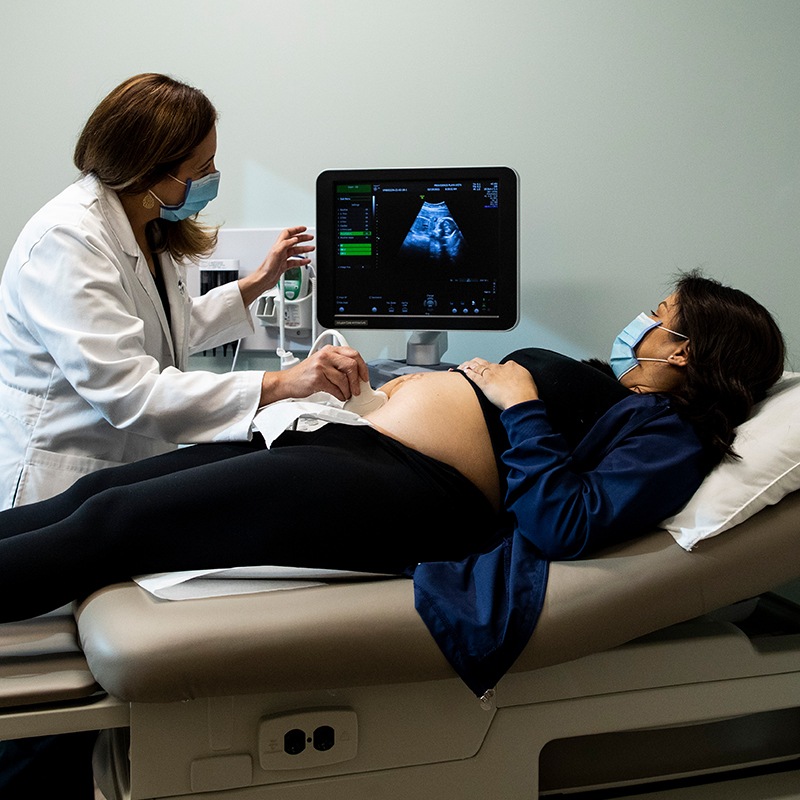Ultrasound

Overview
What is an Ultrasound?
Ultrasound, also called sonography, uses high-fidelity sound waves to produce images for diagnosing conditions that affect the soft tissues and organs of the body. It is a widely used diagnostic tool to make quick and accurate diagnosis since it captures images that don’t show up well on X-rays:
- It’s used during pregnancy to view the uterus and ovaries and to monitor your baby’s development. It’s often the “first” picture of your baby.
- It’s used to diagnose ovarian cysts, fibroids and other conditions of the pelvic area.
- It’s generally painless.
- The procedure is safer than diagnostic techniques such as X-rays and CT scans because you aren’t exposed to ionizing radiation.
What to Expect
What to Expect During an Ultrasound
Ultrasound uses a transducer that is gently pressed against the skin. The sound waves echo back and the transducer converts the images electronically to provide a precise image. In some cases, your doctor will use a special transvaginal ultrasound transducer that is gently inserted in your vagina to see your uterus and ovaries in order to diagnose certain conditions. A typical ultrasound takes between 5 and 30 minutes, and you are awake during the procedure.
To help you prepare for your ultrasound, your St. John’s Physician Partners gynecologist will give your specific instructions, depending on the test being performed.

Specialists
















